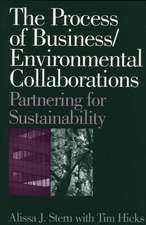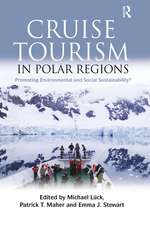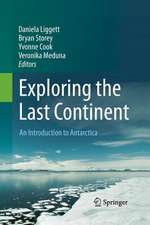Antarctic Futures: Human Engagement with the Antarctic Environment
Editat de Tina Tin, Daniela Liggett, Patrick T. Maher, Machiel Lamersen Limba Engleză Hardback – 16 oct 2013
| Toate formatele și edițiile | Preț | Express |
|---|---|---|
| Paperback (1) | 644.63 lei 6-8 săpt. | |
| SPRINGER NETHERLANDS – 23 aug 2016 | 644.63 lei 6-8 săpt. | |
| Hardback (1) | 656.74 lei 6-8 săpt. | |
| SPRINGER NETHERLANDS – 16 oct 2013 | 656.74 lei 6-8 săpt. |
Preț: 656.74 lei
Preț vechi: 772.64 lei
-15% Nou
Puncte Express: 985
Preț estimativ în valută:
125.68€ • 131.05$ • 104.45£
125.68€ • 131.05$ • 104.45£
Carte tipărită la comandă
Livrare economică 21 martie-04 aprilie
Preluare comenzi: 021 569.72.76
Specificații
ISBN-13: 9789400765818
ISBN-10: 9400765819
Pagini: 300
Ilustrații: XX, 360 p. 33 illus., 16 illus. in color.
Dimensiuni: 155 x 235 x 22 mm
Greutate: 0.87 kg
Ediția:2014
Editura: SPRINGER NETHERLANDS
Colecția Springer
Locul publicării:Dordrecht, Netherlands
ISBN-10: 9400765819
Pagini: 300
Ilustrații: XX, 360 p. 33 illus., 16 illus. in color.
Dimensiuni: 155 x 235 x 22 mm
Greutate: 0.87 kg
Ediția:2014
Editura: SPRINGER NETHERLANDS
Colecția Springer
Locul publicării:Dordrecht, Netherlands
Public țintă
GraduateCuprins
1. Setting the scene: Human activities, environmental impacts and governance arrangements in Antarctica.- Part I. Species and Ecosystems.- 2. Human Impacts on Antarctic Wildlife: predictions and speculations for 2060.- 3. Antarctic Marine Living Resources – “The future is not what it used to be”.- 4. Present and future conservation management of Antarctic baleen whales.- 5. Global movement and homogenisation of biota: challenges to the environmental management of Antarctica?.- 6. The Effects of Human Trampling on Maritime Antarctica Soils.- Part I Summary.- Part II. Regional Case Studies.- 7. Environmental Situation and Management Challenges for the Fildes Peninsula Region.- 8. Historical developments, drivers of change and future scenarios for human activities in Deception Island.- 9: Long Term Monitoring of Human impacts to the Terrestrial Environment at McMurdo Station.- Part II Summary.- Part III. Actors and Sectors.- 10. Valuing Antarctica: Emerging Views from International Studies.- 11. Strategic thinking and the Antarctic wilderness: Contrasting alternative futures.- 12. Strategic management and regulation of Antarctic tourism.- 13. Future challenges in environmental management of National Antarctic Programs.- 14. Strategic thinking for the Antarctic environment: the use of assessment tools in governance.- Part III Summary.- Part IV. Conclusions.- 15. Conclusions: Multiple dimensions of human engagement with the Antarctic environment.- Index.
Recenzii
From the book reviews:
“Antarctic Futures, based on a session held during the Oslo Science Conference (Norway) in 2010, focuses on the impact of human activities and regional environmental change in the polar regions … . Broad and thoughtful in its approach, this work is a noteworthy addition to the expanding canon of analyses of the human impact on and the future of Antarctica. Summing Up: Recommended. Upper-division undergraduates through professionals/practitioners.” (H. Doss, Choice, Vol. 51 (11), August, 2014)
“Antarctic futures is a timely assessment on good authority which mostly succeeds in integrating the natural and social sciences in order to examine existing and alternative environmental practices. … place Antarctic futures on the compulsory reading lists of all Antarctic scholars and their students – the future leaders in polar science and environmental management. This recommendation also extends to other actors and sectors.” (Frigga Kruse, Polar Record, July, 2014)
“Antarctic Futures, based on a session held during the Oslo Science Conference (Norway) in 2010, focuses on the impact of human activities and regional environmental change in the polar regions … . Broad and thoughtful in its approach, this work is a noteworthy addition to the expanding canon of analyses of the human impact on and the future of Antarctica. Summing Up: Recommended. Upper-division undergraduates through professionals/practitioners.” (H. Doss, Choice, Vol. 51 (11), August, 2014)
“Antarctic futures is a timely assessment on good authority which mostly succeeds in integrating the natural and social sciences in order to examine existing and alternative environmental practices. … place Antarctic futures on the compulsory reading lists of all Antarctic scholars and their students – the future leaders in polar science and environmental management. This recommendation also extends to other actors and sectors.” (Frigga Kruse, Polar Record, July, 2014)
Textul de pe ultima copertă
This book discusses concerns for the sensitive environments and ecosystems of Antarctica and looks ahead to the state of the continent as it might be in 2060. At the beginning of the 21st century, Antarctica stands at the edge of a warmer and busier world. The editors have gathered leading researchers to examine the challenges of Antarctic environmental governance, and to address such important questions as: What future will Business-As-Usual bring to the Antarctic environment? Will a Business-As-Usual future be compatible with the objectives set out under the Antarctic Treaty, especially its Protocol on Environmental Protection? What actions are necessary to bring about alternative futures for the next 50 years?
An introductory chapter sets the scene by tracing the history of human activities, and the development of international legislation and other governance initiatives, for managing environmental impacts in Antarctica. Section A: Species and Ecosystems examines the future state of Antarctic ecosystems in general, and specifically focuses on baleen whales, fisheries, introduction of non-native species, and the consequences of human trampling on soils. Section B: Regional Case Studies offers detailed summaries of human activities and environmental management in three distinct regions - Fildes Peninsula and Deception Island in the South Shetland Islands, and McMurdo Station in the Ross Sea region - as microcosms of current practice from which lessons can be learned. Section C: Actors and Sectors offers a diverse set of perspectives from representatives of environmental non-governmental organizations and governmental institutions as well as from tourism and sustainability researchers on how Antarctica is used, valued and governed, and how strategic thinking can assist in exploring, and potentially reaching, desirable futures for the Antarctic environment. The conclusion chapter summarizes thepreceding discussions and calls for integrating a strategic vision into all aspects of Antarctic environmental governance.
Antarctic Futures: Human Engagement with the Antarctic Environment draws on research from the International Polar Year (2007-2009) presented at the 2010 Oslo Science Conference, probing multiple dimensions of human engagement with the Antarctic environment.
An introductory chapter sets the scene by tracing the history of human activities, and the development of international legislation and other governance initiatives, for managing environmental impacts in Antarctica. Section A: Species and Ecosystems examines the future state of Antarctic ecosystems in general, and specifically focuses on baleen whales, fisheries, introduction of non-native species, and the consequences of human trampling on soils. Section B: Regional Case Studies offers detailed summaries of human activities and environmental management in three distinct regions - Fildes Peninsula and Deception Island in the South Shetland Islands, and McMurdo Station in the Ross Sea region - as microcosms of current practice from which lessons can be learned. Section C: Actors and Sectors offers a diverse set of perspectives from representatives of environmental non-governmental organizations and governmental institutions as well as from tourism and sustainability researchers on how Antarctica is used, valued and governed, and how strategic thinking can assist in exploring, and potentially reaching, desirable futures for the Antarctic environment. The conclusion chapter summarizes thepreceding discussions and calls for integrating a strategic vision into all aspects of Antarctic environmental governance.
Antarctic Futures: Human Engagement with the Antarctic Environment draws on research from the International Polar Year (2007-2009) presented at the 2010 Oslo Science Conference, probing multiple dimensions of human engagement with the Antarctic environment.
Caracteristici
Explores the views of leading researchers on the needs and challenges of Antarctic environmental governance, both now and in 50 years’ time Investigates the impacts of human activities on Antarctic ecosystems and species Integrates natural and social science approaches to examine existing and alternative environmental management and monitoring practices























